5. Kids (Larry Clark, 1995) tied with Ken Park (Larry Clark, Edward Lachman, 2002)
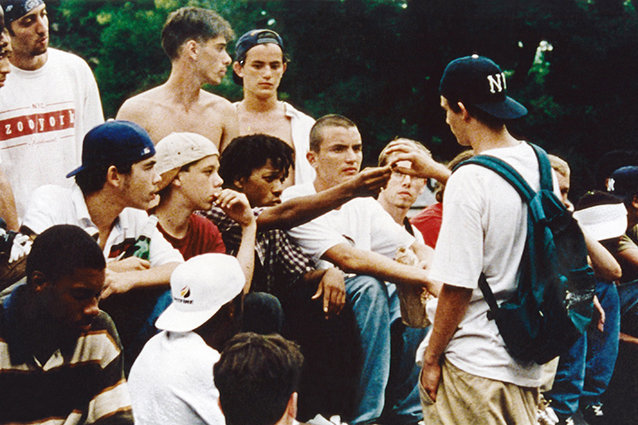
Telly (Leo Fitzpatrick) and Casper (Justin Pierce) are about 15 and all they do in their life is skate around Manhattan, have sex and party. Jennie (Chloë Sevigny) and Ruby (Rosario Dawson) were tested for STDs and Jennie was positive for HIV.
We’re in the 90s and these kids are wild. They smoke, drink, do drugs, push their limits, get overstimulated from deflowering virgins, cheat, lie, fret, worry, deconstruct, attempt to glue the pieces back together, fail, succeed. We only witness a single day from these kids’ lives, almost like we’re watching a documentary, but we know this is what all days look like in their world.
Larry Clark makes a film about the kids nobody wants to talk about. The punks, the unkind, the careless. They seek thrills, acceptance, and they try to identify themselves differently from the generation of their parents. And they do it the only way they can. Their parents are nonexistent to them, and therefore to us. They are not presented within the context of a problematic family or school. They are by themselves, as if they only coexist in the greater context, that of the society. They live inside the world and if there is anyone to blame for what happens to them, it’s the world itself.
“Kids” is Clark’s debut film as a director, Sevigny’s debut leading role, Harmony Korine’s debut screenplay, and the beginning of an era of collaborations between three artists-symbols of contemporary American arthouse cinema.
A film that raised controversy and criticism and the world’s attention to Clark and Korine, from various viewpoints, and despite its violence and rawness in the display of sexuality, “Kids” is nevertheless a sensitively made film about kids that do exist, with total respect to them and their story.
Seven years later, after having done some other films, Clark teamed up with Korine yet again for another borderline pornographic teen movie, “Ken Park.” The script is signed by Korine who based it on Clark’s own stories and journals, and the film is directed by Clark together with director and cinematographer Ed Lachman.
Krap Nek – a nickname from Ken Park (Adam Chubbuck) spelled backwards – commits suicide in front of a set-up camera in the opening scene. The rest of the film is divided into segments, each presenting one of his friends’ lives, resulting in revealing Krap Nek’s reasons for killing himself. Shawn (James Bullard) has a relationship with a girl and also sleeps with her mother. Claude (Stephen Jasso) is constantly bullied by his father for not being manly enough, until his father tries to abuse him sexually. Peaches (Tiffany Limos) lives with her lunatic religious father who forces her to act as if she was her deceased mother. And Tate (James Ransone) is an adorably edgy, kind of weird, kind of obsessive, kind of sadistic, kind of perverted young boy living with his grandparents, a sweet couple that seems to get on his nerves, whom he eventually kills.
“Ken Park” is another film by Clark that is considered controversial and highly provocative, even more so than “Kids.” We have skaters, we have oversexed teens, we have “abnormality” and experimenting. But this time the emphasis is given more straightforwardly in the dysfunctional families that contain the kids. Parents are neither seemingly non-existent, as in “Kids,” nor neglectful, as in his later-to-be-made “The Smell of Us.”
Here they are presented as messing kids up. The characters in Clark’s films, whether always fully built or not, are original and the subject and depiction of the adolescents’ sexuality is more hardcore and exploitative than before, including bondage scenes, parental involvement, asphyxiation, and Tate getting sexually aroused after having killed his grandparents. A typical piece of Clark’s filmmaking, pushing things a step further, as always.
4. Palindromes (Todd Solondz, 2004)
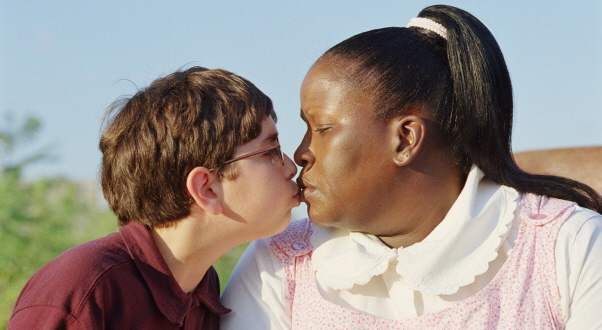
Aviva (portrayed by eight different actors) has just entered adolescence when her cousin Dawn (a reference to the main character in the director’s earlier film, “Welcome to the Dollhouse”) has just committed suicide after finding out she was pregnant.
Young Aviva tells her parents then that she wishes to have a lot of babies. Some years later she gets pregnant by a family friends’ son, Judah (Robert Agri) – later to call himself Otto – and wishes to keep the baby. Her mother (Ellen Barkin), however, persuades her to have an abortion as, according to her, a baby at this young age would ruin the girl’s life, let alone the higher possibility of it having some genetic deficiency.
When the abortion is finally successfully done, it is implied that Aviva can no longer have children, a fact she will never learn. She becomes a tragic figure, in the way that she is seen to spend the rest of her teenage life trying to get pregnant. She flees home and changes her name to Henrietta. She gets involved with a truck driver, then meets the Sunshines, a Christian family who adopts children with deficiencies, who otherwise would have been aborted, and after the occurrence of various events, she returns home again.
Todd Solondz’s film centers around the subject of premature sex, sexual relationships between kids or teenagers with adults and, of course, abortion, which he discusses from different viewpoints in the various segments of the film, either for or against. But really he doesn’t discuss it exactly, nor is there any clear argument for or against, as it generally happens in the director’s films.
He praises relativism, here evident also in the film’s title – palindromes, which are words that can be also read backwards – as well as the usage of different people to play Aviva, the change in the characters’ names, and in the circular way in which the film unfolds. It starts and ends with the character almost being in the same spot.
In Solondz’s universe, there is no distinguishable right and wrong, and even if there is, it’s not his aim to provide us with a given answer. No fingers pointed at anyone, no heroes, no antiheroes – everything can be both ‘good’ and ‘bad,’ both ‘disturbing’ and ‘a human weakness,’ depending on the angle from which you look at it and the circumstances.
He doesn’t want us to pick sides – he wants to remind us that there are always other sides on things apart from our own and maybe, just maybe, there is no consistency in humans and the world. And hence, we could stop looking for morality in our choices, for the choice we make, whether pleasant or not, is perhaps the only one possible anyway.
3. The Dreamers (Bernardo Bertolucci, 2003)
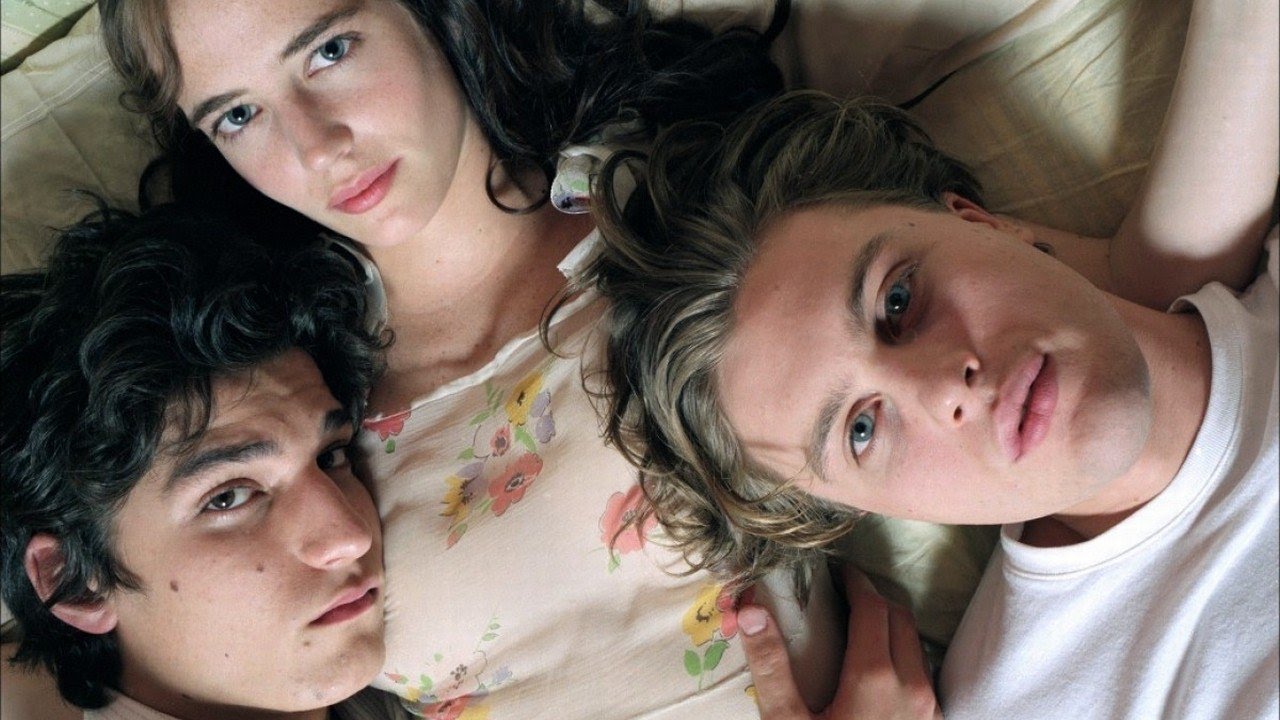
Based on the scriptwriter’s own novel “The Holy Innocents” and with the 1968 student riots in Paris in the background, “The Dreamers” unfolds around a dreamy and peculiar love triangle formed between Matthew (Michael Pitt), an American exchange student, and a twin brother and sister, Théo (Louis Garrel) and Isabelle (Eva Green).
The three of them share a mutual love for the cinema and soon after they meet, the twins invite Matthew to stay with them while their parents are out of town. He is startled by their sexual liberation and the ease they have with each other’s naked bodies and the eroticism between them. They become friends and Isabelle and him start an erotic relationship.
If not anything else, Bernardo Bertolucci creates a beautiful, delightful film to watch, full of cinema references which are made in a way that, not only do they not count as cliché, but they actually add a lot to the film’s overall nostalgic atmosphere, an atmosphere that is also as erotic and evocative as its young and restless characters.
Perhaps what could be mentioned here as a not-so-charming feature of the film is a possible attempt to provide answers. Answers of rating things from the more effective to the less effective (for social change), when maybe that effect is not quantitatively measured, and the “percentage” of each impact is not of more interest than the acknowledgment of the fact that art (like cinema, literature and music), philosophical and existential quests and points (like sexual liberation), and classic political action (like riots, molotovs and barricades) all correlate.
2. Valerie and Her Week of Wonders (Jaromil Jires, 1970)
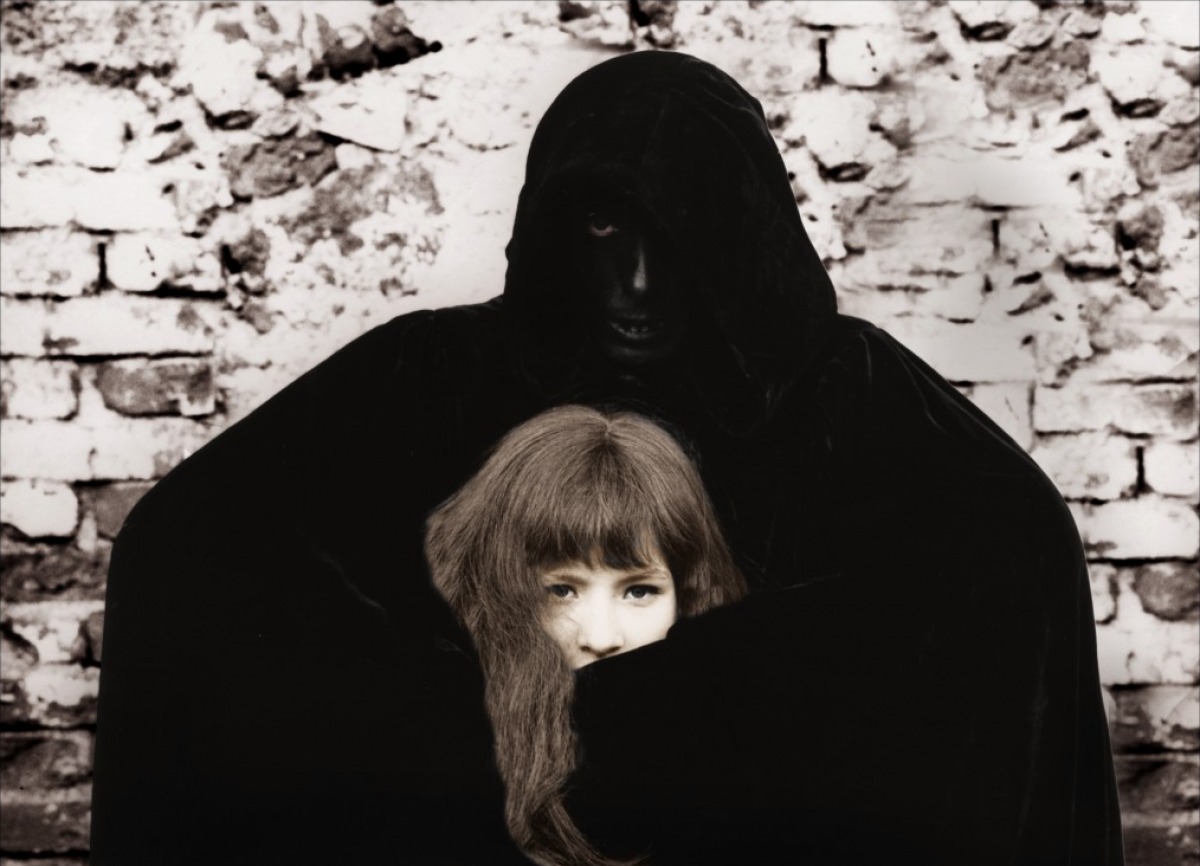
“Valerie and Her Week of Wonders” is a dark surrealistic fantasy fairytale based on the novel of the same name by Vítězslav Nezval. Thirteen-year-old Valerie (Jaroslava Schallerová) is living with her grandmother Elsa (Helena Anýzová), who would do anything, including sacrifice her granddaughter, to become young again.
The girl has a pair of earrings that belonged previously to her mother and before that to the Constable (Jirí Prýmek), a kind of vampire/monster who was the previous owner of the house. These earrings protect her. There’s also a boy, Orlík (Petr Kopriva), of whom Valerie is particularly fond and who has feelings for her too, but she finds out they might be brother and sister.
A number of events occur, but that is not particularly important. The whole film resembles an illusion. The same actors portray more than one character in a world of odd creatures and demeanors. It might as well all be part of Valerie’s imagination, or a dream, her way to see things in her life while being at a turning point at the beginning of adolescence, or it could all just be a version of reality the way it is. That is not important either.
The film is a mesmerizing praise on youth, a lyrical tale of a girl discovering the world, a dark Alice-in-Wonderland kind of tale of sexual awakening, both terrifying and violent, and also sensuous and “healing,” as this process usually is for adolescents.
1. Immoral Tales (Walerian Borowczyk, 1973)
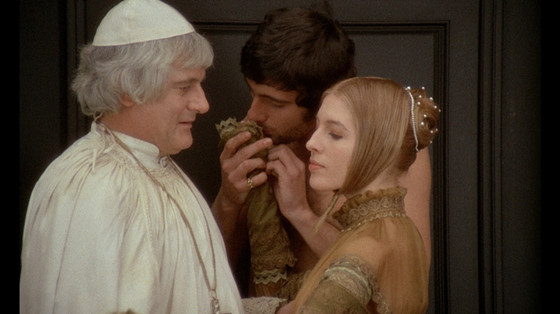
The film consists of four different stories, all revolving around erotic themes. André (Fabrice Luchini) takes his 16-year-old cousin Julie (Lise Danvers) to the beach and instructs her on how to perform fellatio on him. Thérèse (Charlotte Alexandra) is a religious teenage girl whose immense loyalty to Christ transfigures into sexual desire and masturbation while reading the Bible.
“Countess Dracula” Elisabeth Báthory (Paloma Picasso) tortures and murders young girls and bathes in the blood of virgins to preserve her youth. Lucrezia Borgia (Florence Bellamy), Pope Alexander VI’s daughter, is having sex with her relatives. And a fifth story was supposed to be part of the anthology, where a woman has sex with a beast, a story which was later taken out and developed into a seperate picture called “The Beast.”
Walerian Borowczyk is a poet, cinematically speaking, and a pornographer at the same time. His film is considered highly controversial and even disturbing for some, for its lack of inhibition and Borowczyk’s presumably misogynistic views. It includes incest, blood lust, intense masturbation with a cucumber, and also lustful shots of girls’ fresh bodies and close-ups on promising young lips and fingers inside them. His eye for his subjects is obscene, and his camera is lascivious.
His “Immoral Tales” are immoral in such an exhausting and exciting way. “Arty pornography” – for those obsessed with genres and definitions and drawing the line – or not, watching this movie is certainly a thrilling experience and if it does disturb and shock, then maybe that ought to be considered a positive trait for a filmmaker.
Author Bio: Danae is a cinephile from Greece. She studied Psychology and loves watching movies.